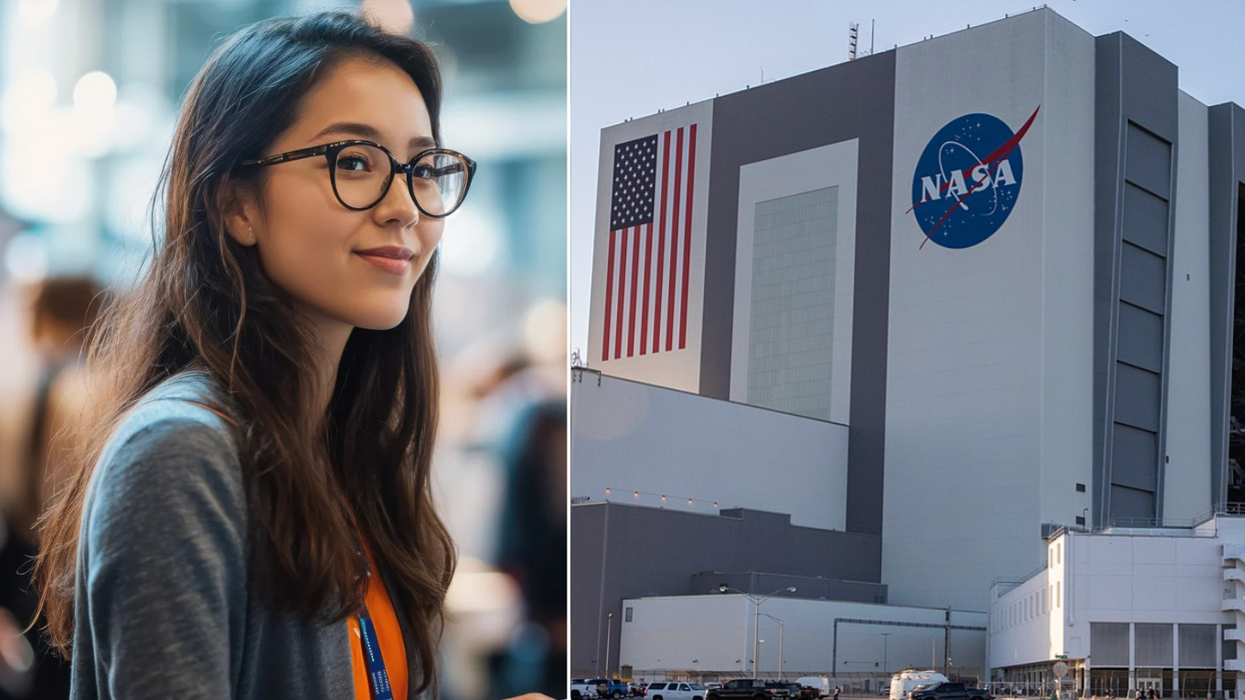Why aquaponics may be the future of urban farming, and one solution to our local food problem.The majority of Americans live in urban environs. In fact, only 20 percent of Americans reside in rural areas. Our food system, unfortunately, has not urbanized alongside the U.S. population. Instead, food travels an average of 1,200 to 2,000 miles before it reaches our plates. One-fifth of all of the fossil fuels burned in the United States are consumed in food production and transportation. According to Food & Water Watch, 80 percent of that energy is spent on "processing, packaging, selling, and storing food after it leaves the farm." Some estimates "predict that 120 million tons of CO2 emissions are directly attributable to domestic food transport each year." The U.S. food system is so inefficient that it "uses 10 nonrenewable fossil fuel calories to produce only one food calorie."It doesn't take an economist to tell you that spending 10 calories of nonrenewable energy for one calorie of food is an inefficient model. To fix it, food needs to be produced closer to where a majority of people actually eat it, which means in cities. Eating fresh, local, and unprocessed food goes along way to increasing food's sustainability. Food & Water Watch suggests that fresh peas could be produced with 60 percent less energy while consuming 75 percent fewer fossil fuels than those same peas after packaging and processing.So, how do we go about growing all of this healthy food in cities? With greenhouse-grown fish and vegetables. At least, that is one of the solutions being floated by Cityscape Farms, a San Francisco company that hopes to create sustainable aquaponic food systems by combining hydroponics with aquaculture (the cultivated farming of fish). Such a system of urban greenhouses would serve as a collection of aquaponic food centers.Greek for "water labor," hydroponics is soil-less farming that allows you to grow plants in non-arable conditions. Plants need energy, water, nutrients, and physical support. A hydroponic setup allows you to emulate all of these conditions. Mike Yohay, CEO and founder of Cityscape believes "the only advantage soil has over a hydroponic system is that some soil comes with a nutrient source and is pre-existent in the environment."Hydroponics traditionally uses petroleum-based fertilizers in the water, which means that many hydroponic setups do not produce organic food. "To achieve greater sustainability, we are going to close the nutrient loop with an emulated ecosystem. Ours is a natural system-fish, water, fruit, and vegetables all living together in a sort of permaculture. In an aquaponic system, the effluent of the fish becomes the nutrient for the plant." Cityscape plans to raise and sell its tilapia fish as protein while growing its produce organically from this solution of water and fish waste.
Cityscape hopes to launch its first farm in the first half of 2010. Their aquaponic greenhouses would be built in vacant lots and on rooftops. To start out, they are considering sites in San Francisco's sunnier southern and eastern zones to capture plentiful solar energy. To monetize, Cityscape will serve as a wholesaler to local distributors and restaurants as well as operate a weekly farmers market. Yohay says there is interest from Bay Area restaurants enthusiastic about hyper-local and organic produce like strawberries and tomatoes being produced even in the off-season. That's another advantage of hydroponic farming: the changing temperatures and seasons do not limit the indoor growing cycles.And, for Yohay, the longer growing season is just one of many advantages. Aquaponics could also provide a more efficient use of our water resources. According to UNESCO, 70 percent of our fresh water worldwide is currently being used in agriculture. Fresh water in normal agricultural usage quickly becomes contaminated with petro-industrial chemicals and fertilizers. Aquaponics, on the other hand, constantly recycles the same organically fertilized water. "The embedded water and the embedded energy will be less in our model than in traditional models. We plan to initially power these aquaponic greenhouses on the grid and then switch to solar and other sustainable energy sources."By eliminating the need for soil and using fish waste to feed the plants, aquaponic farming also eliminates the need for chemical fertilizers. Because the system takes nutrients from the fish instead of oil-based fertilizers, it relies on a mere fraction of the inputs and outputs compared to conventional field agriculture.So could this sort of farming actually work on a national level? Dr. Dickson Despommier, the Columbia professor and vertical farming guru, thinks so. He cites Cityscape's "light weight and highly productive" structure and the speed with which food production can begin as two key indicators of potential success. One reason for this quick growth cycle involves the relationship between a plant's environment and its energy resources. A plant traditionally expels a lot of energy sending down roots to look for water and nutrients. In an aquaponic setup,those needs are already met, which produces a shallower root systems and allows the plant to expend more energy on leafy, vertical, vegetative growth. Yohay predicts that "at Cityscape we will produce just over one hundred tons of food in twenty thousand square feet of space per year-the first year will be less as we wait for the fish to cycle up, but after that we'll operate at regular production levels."A national network of urban farms is also something that Yohay envisions. "If we are going to make substantive change in our industrial model we need to look at big solutions, that means looking at the parts of the country that need this the most. We've been invited by cities like New York, L.A., Chicago, and even as far as the Virgin Islands. Our [model] is a completely site independent methodology-we aren't reliant on soil testing and the perfect parcel of land; we don't even need land. The soil in cities is often times ill-suited for agriculture because of heavy metals; we mitigate these dangers by avoiding the use of soil all together. The fact is the world is running out of quality water and soil. Look at the food riots in Asia, Latin America, and Africa. These food shortages were partially the result of the diminishing quantity and quality of soil."As in any healthy natural system, diversity is key. Aquaponic and hydroponic farms are but one of many potential urban farming solutions. Yohay concurs, "if we deconstruct the industrial model of a centralized Big Ag monopoly then we need in its place a diversity of offerings. Cityscape is not the entire solution, but we are a part of that solution. I don't consider other urban farmers as competitors. We need each other if we are gong to be competitive on a national scale. We need the money and political will that comes from having a critical mass of people and organizations growing their food responsibly in cities. Our real competitors are the Big Ag companies hiding the externalities, both environmental and social, of growing their food in irresponsible ways that pollute and destroy our land while exploiting unfair labor practices."Oil-drenched food inefficiently transported and treated with chemicals. That doesn't sound too appetizing. Organic tomatoes and strawberries growing harmoniously with fish. That just might be deliciously scalable.Guest blogger Adam Starr is a freelance writer. He lives in San Francisco.
Cityscape hopes to launch its first farm in the first half of 2010. Their aquaponic greenhouses would be built in vacant lots and on rooftops. To start out, they are considering sites in San Francisco's sunnier southern and eastern zones to capture plentiful solar energy. To monetize, Cityscape will serve as a wholesaler to local distributors and restaurants as well as operate a weekly farmers market. Yohay says there is interest from Bay Area restaurants enthusiastic about hyper-local and organic produce like strawberries and tomatoes being produced even in the off-season. That's another advantage of hydroponic farming: the changing temperatures and seasons do not limit the indoor growing cycles.And, for Yohay, the longer growing season is just one of many advantages. Aquaponics could also provide a more efficient use of our water resources. According to UNESCO, 70 percent of our fresh water worldwide is currently being used in agriculture. Fresh water in normal agricultural usage quickly becomes contaminated with petro-industrial chemicals and fertilizers. Aquaponics, on the other hand, constantly recycles the same organically fertilized water. "The embedded water and the embedded energy will be less in our model than in traditional models. We plan to initially power these aquaponic greenhouses on the grid and then switch to solar and other sustainable energy sources."By eliminating the need for soil and using fish waste to feed the plants, aquaponic farming also eliminates the need for chemical fertilizers. Because the system takes nutrients from the fish instead of oil-based fertilizers, it relies on a mere fraction of the inputs and outputs compared to conventional field agriculture.So could this sort of farming actually work on a national level? Dr. Dickson Despommier, the Columbia professor and vertical farming guru, thinks so. He cites Cityscape's "light weight and highly productive" structure and the speed with which food production can begin as two key indicators of potential success. One reason for this quick growth cycle involves the relationship between a plant's environment and its energy resources. A plant traditionally expels a lot of energy sending down roots to look for water and nutrients. In an aquaponic setup,those needs are already met, which produces a shallower root systems and allows the plant to expend more energy on leafy, vertical, vegetative growth. Yohay predicts that "at Cityscape we will produce just over one hundred tons of food in twenty thousand square feet of space per year-the first year will be less as we wait for the fish to cycle up, but after that we'll operate at regular production levels."A national network of urban farms is also something that Yohay envisions. "If we are going to make substantive change in our industrial model we need to look at big solutions, that means looking at the parts of the country that need this the most. We've been invited by cities like New York, L.A., Chicago, and even as far as the Virgin Islands. Our [model] is a completely site independent methodology-we aren't reliant on soil testing and the perfect parcel of land; we don't even need land. The soil in cities is often times ill-suited for agriculture because of heavy metals; we mitigate these dangers by avoiding the use of soil all together. The fact is the world is running out of quality water and soil. Look at the food riots in Asia, Latin America, and Africa. These food shortages were partially the result of the diminishing quantity and quality of soil."As in any healthy natural system, diversity is key. Aquaponic and hydroponic farms are but one of many potential urban farming solutions. Yohay concurs, "if we deconstruct the industrial model of a centralized Big Ag monopoly then we need in its place a diversity of offerings. Cityscape is not the entire solution, but we are a part of that solution. I don't consider other urban farmers as competitors. We need each other if we are gong to be competitive on a national scale. We need the money and political will that comes from having a critical mass of people and organizations growing their food responsibly in cities. Our real competitors are the Big Ag companies hiding the externalities, both environmental and social, of growing their food in irresponsible ways that pollute and destroy our land while exploiting unfair labor practices."Oil-drenched food inefficiently transported and treated with chemicals. That doesn't sound too appetizing. Organic tomatoes and strawberries growing harmoniously with fish. That just might be deliciously scalable.Guest blogger Adam Starr is a freelance writer. He lives in San Francisco.
















 Otis knew before they did.
Otis knew before they did.